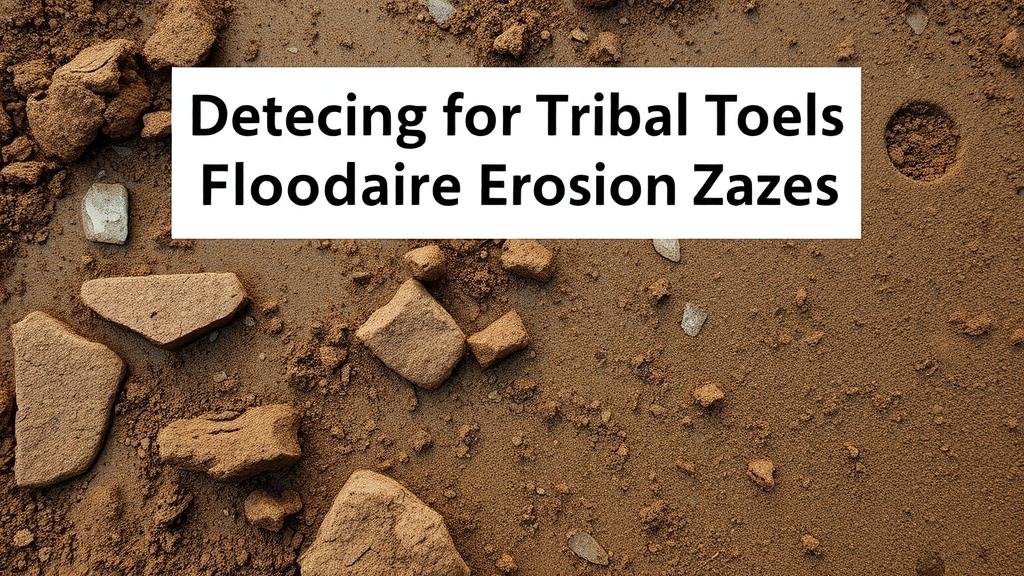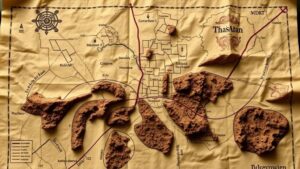Detecting for Tribal Tools in Floodplain Erosion Zones
Detecting for Tribal Tools in Floodplain Erosion Zones
The preservation and study of tribal tools within erosion-prone floodplain areas present both unique challenges and opportunities for archaeology and anthropology. This article explores the methodologies for detecting these tools, the impact of erosion on their availability, and the broader implications for understanding tribal heritage and environmental interaction. By focusing on real-world applications and case studies, we aim to provide insights that enhance both archaeological practice and environmental stewardship.
The Importance of Tribal Tools
Tribal tools, encompassing a wide range of artifacts such as stone implements, wooden utensils, and pottery, offer invaluable insights into the cultural practices, technologies, and daily lives of indigenous populations. e tools serve as tangible connections to past societies and are critical for understanding their adaptation to environmental changes.
For example, the Northern Plains tribes of North America utilized a variety of stone tools for activities ranging from hunting to food preparation. Archaeological evidence from sites like the Knife River Flint Quarries in North Dakota indicates sophisticated tool-making techniques and social structures associated with these practices.
Understanding Erosion in Floodplain Areas
Floodplain erosion is a natural process that can drastically alter landscapes, especially in areas with significant sediment transport. The ongoing erosion exposes, displaces, and potentially destroys archaeological remains. Factors contributing to this erosion include:
- Water flow dynamics: The energy and volume of floodwaters can wash away topsoil and archaeological artifacts.
- Vegetative cover: Changes in vegetation due to land use or climate change can exacerbate erosion rates.
- Human activity: Agricultural practices and urban development contribute to increased runoff and sediment displacement.
Research conducted by the U.S. Geological Survey (USGS) reveals that historical flood events can result in sediment loss ranging from 5% to 30% of the floodplains surface area, underscoring the urgency of conducting archaeological investigations in these zones.
Methodologies for Detection
Detecting tribal tools in floodplain erosion zones requires a multidisciplinary approach, combining traditional archaeological methods with modern technology. The following methodologies are employed:
- Field Surveys: Systematic surface surveys allow for the identification of exposed artifacts. Archaeologists use transects and grid systems to ensure comprehensive coverage.
- Geophysical Techniques: Non-invasive methods such as Ground Penetrating Radar (GPR) and electromagnetic surveys can help locate buried artifacts without physical excavation.
- Drones and Remote Sensing: Satellite imagery and drone technology can survey large areas quickly, identifying erosion patterns and potential artifact locations.
For example, a project at the Cahokia Mounds site in Illinois utilized aerial drone surveys to map erosion-prone areas that might yield important artifacts while minimizing disturbance to the landscape.
Case Studies: Successful Artifact Recovery
Successful recoveries of tribal tools have been documented in numerous floodplain areas, providing models for future archaeological efforts. A notable example is the recovery of Native American artifacts along the banks of the Columbia River in Washington State.
Researchers employed a combination of surface surveys and laser scanning to document eroded sections, leading to the discovery of a significant cache of stone tools dating back over 8,000 years. The recovered tools revealed trade patterns and resource use, helping to reconstruct the historical ecology of the area.
Ethical Considerations and Community Engagement
Engaging local tribal communities in archaeological endeavors is vital for ethical practice in the recovery of artifacts. Collaboration fosters respect for indigenous knowledge and aids in the interpretation of findings. Archaeologists must adhere to guidelines outlined by the Native American Graves Protection and Repatriation Act (NAGPRA), ensuring that artifacts are treated with dignity and returned when appropriate.
For example, in the Pacific Northwest, collaborations between archaeologists and indigenous tribes have led to the co-management of archaeological sites, integrating traditional ecological knowledge into modern preservation practices.
Actionable Takeaways
For archaeologists, land managers, and policymakers, the following actionable steps can enhance the detection and preservation of tribal tools in floodplain erosion zones:
- Use regular monitoring of floodplain areas to assess erosion impact on archaeological sites.
- Use a combination of traditional and modern detection methodologies to maximize the recovery of artifacts.
- Strengthen partnerships with local tribes to promote ethical archaeological practices and the stewardship of cultural heritage.
By integrating these strategies, stakeholders can effectively safeguard tribal heritage and promote an understanding of how indigenous peoples interacted with their environments, ensuring that future generations benefit from our shared cultural history.



